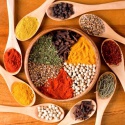News about agricultural products

Onions, garlic, carrots, peppers: a review of the world market

The growing demand for walnuts revived the California market. The current harvest of 670 thousand tons against 600 thousand tons last year led to a drop in prices. Thanks to the huge demand from India, Turkey and the Middle East, the California industry quickly returned to a comfortable position - in recent weeks, prices have risen by at least 10%. Walnuts In shell and 80% of LHP are becoming scarce.

“There are few negative reports on new crops, and this is a good sign. Night frosts during the flowering of vineyards and fruit trees are dangerous, but not the only negative factor. Rains during harvesting and drying the harvest will cause considerable damage,” experts note.

Almond
The market of almond is stable today. Demand and prices have decreased. Perhaps competitive prices and a strong euro inspire buyers from the EU to buy nuts. From August 2016 to February 2017, India became the largest importer of Californian almonds. Shipments to India increased by 59% and amounted to 54 431 tons.

Legumes are an important source of edible protein and a valuable crop in the crop rotation. The main volumes of consumption of legumes are in the countries with a rapidly growing population, which creates the prerequisites for growth in world trade.

High indicators of the global peanut market of the past season will continue this year.

The world market of nuts and seeds as of today: an overview

The dried fruit market finished the winter as a whole on an optimistic note. First, a new crop from the Southern Hemisphere began to arrive, in addition, buyers became more active. Optimism reinforces the forecasts of a significant growth of the world economy, which contributes to the growth of incomes and, as a result, the increase in the consumption of a share of healthy products, which include nuts and dried fruits. Of course, one should not forget about other significant factors, such as the policy and the exchange rate, whose behavior is not always easily predictable.

As it is known, China controls about 80% of the world export of garlic. Bad harvest of this year and enterprising Chinese speculators have caused the present boom: the wholesale price of garlic in the country increased by almost three times, and so provoked the sharp rise in the world market.

Warming has provoked quite a sharp fall in prices for vegetables in Europe. Recall that until the last decade of February, most types of vegetable products in European markets were offered at fairly high prices due to abnormally cold weather conditions. However, the growth in supply volumes became palpable at the end of last month, and as of the beginning of March, prices for fresh vegetables fell below last year's level.

Contrary weather in Spain caused a lack of market gardening in shopping malls in some EU countries; export prices for vegetables are rising. The situation in the vegetable market in Europe remains quite tense.

The largest segment of the global fruit and vegetable market is the Asia-Pacific region (about 68.1% of the total cost volume) and the main producer, exporter and importer is China. China accounts for more than half of world production and exports of apples. Processing is exposed only on a quarter of them. Other apples are consumed fresh. China also has a leading position in the world in the production and export of carrots and turnips. The expediency of studying the Chinese approach to dealing with fruit and vegetable raw materials is obvious.
